Women’s Movements 1880-1960
Women’s Movements 1880-1960
Woman’s Christian Temperance Union
For God and Home and Native Land
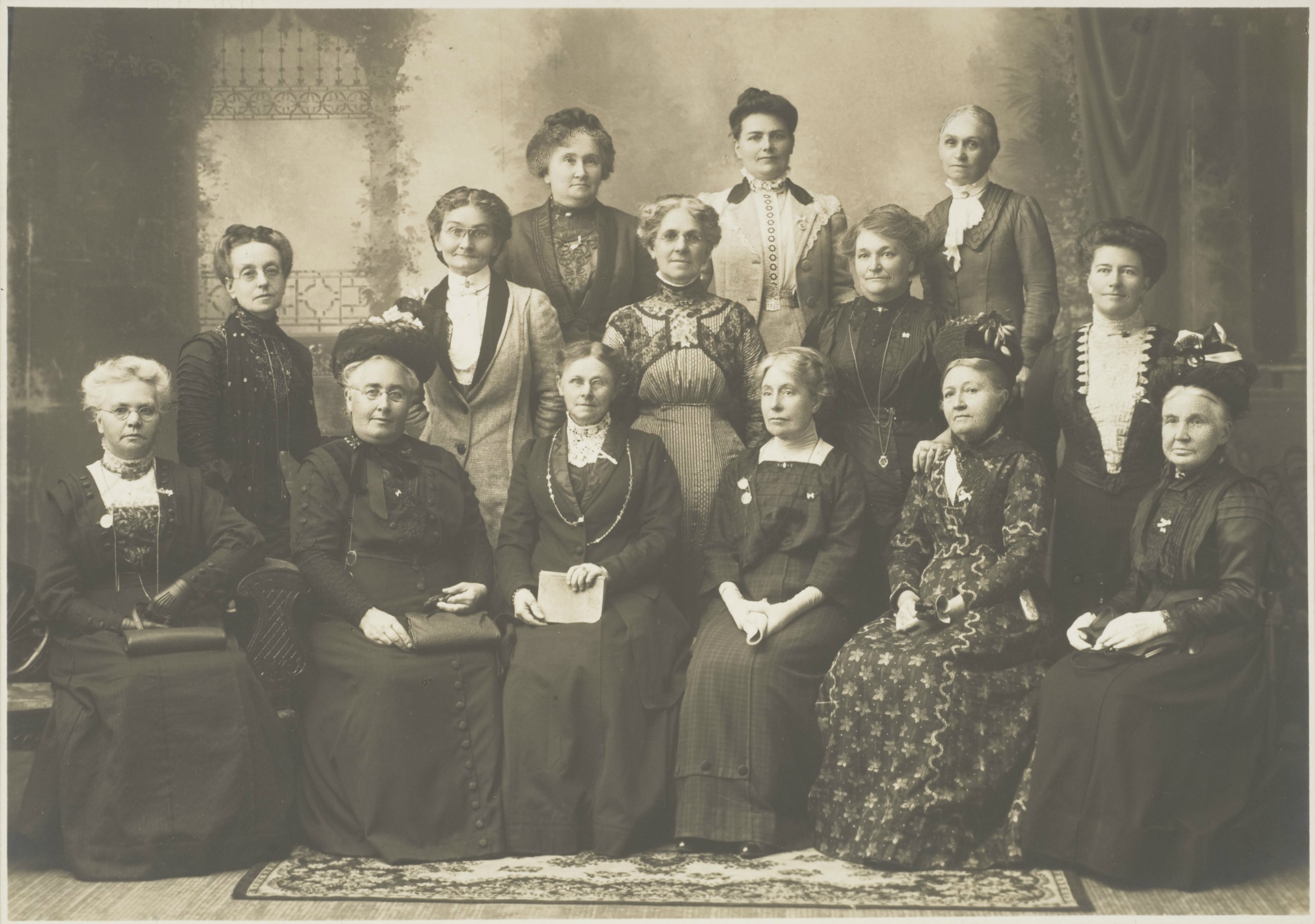
“Fourteen delegates who attended First Convention Melbourne 1891 and Eighth Convention 21 years later, in Brisbane”, Woman’s Christian Temperance Union, 19122001.0085.00071.[i]
The Woman's Christian Temperance Union of Victoria (WCTU) was founded in 1887, bringing together the twelve pre-existing branches spread around Melbourne and Victoria into a colony-wide union.
Marie E. Kirk, a Quaker who had recently migrated from London, and Armadale’s Congregational Minister, the Rev. Philip Moses, assembled the first Organising Conference in 1887 which elected Mary M. Love as president. Love, from West Virginia, had been a member of the United States’ Woman’s Christian Temperance Union before relocating to Melbourne during the previous year.[ii]
The Union’s initial programme, decided at the 1888 first Victorian Annual Convention, concentrated on 'Organisation, Preventive Work, Social Work and Educational Work,' notably decrying the perceived promotion of alcohol by the government and crown.
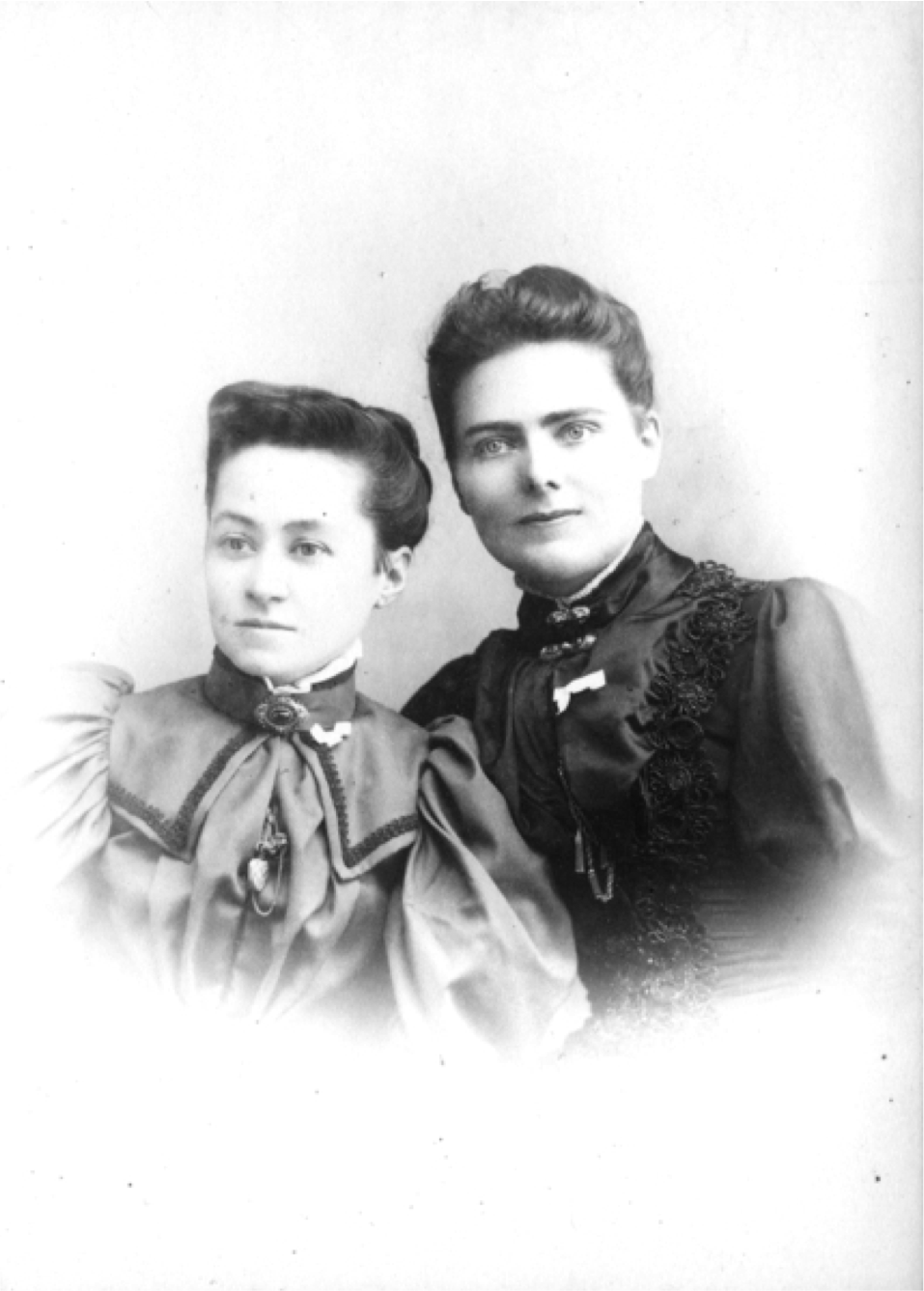
“January 1896 Mrs. H. Lee Mrs. Macdonald"
Woman’s Christian Temperance Union
2001.0085.00038.
Spreading rapidly, by the first Triennial Conference in 1891 (minutes held in 2010.0016 Unit 2 and programme held in 2010.0016 Unit 14), the WCTU had fifty-seven branches across the colony of Victoria. It was in this network of local Unions that all members, with their white ribbon bow insignia pins, signed a pledge to abstain from alcohol and other drugs. This temperance pledge was (and continues to be) representative of the individual and social reform agenda of the temperance union, which conceptualised individual and social issues and morality as linked, informing its commitment to reducing male violence and improving women’s welfare.
The Victorian Union officially committed itself to women’s suffrage at its 1890 Convention, stating that ‘as men and women are alike in having to obey the laws’ they ‘should also be equal in electing who make the laws’. This was grounded in the belief that ‘the ballot in the hands of women would be safeguard to the home’, and that women would have a moralising influence on politics and society.[iii]
As a mass organisation with strong religious links, the Union’s activism for women’s suffrage heralded a shift in the movement away from being a vision of a radical minority, towards being the demand of a significant number of women from a variety of socio-economic classes and geographic regions. Indeed, minute books held by the University of Melbourne Archives are regionalised, therefore providing researchers with the opportunity to compare the conditions and activities of branches throughout Victoria and Australia.
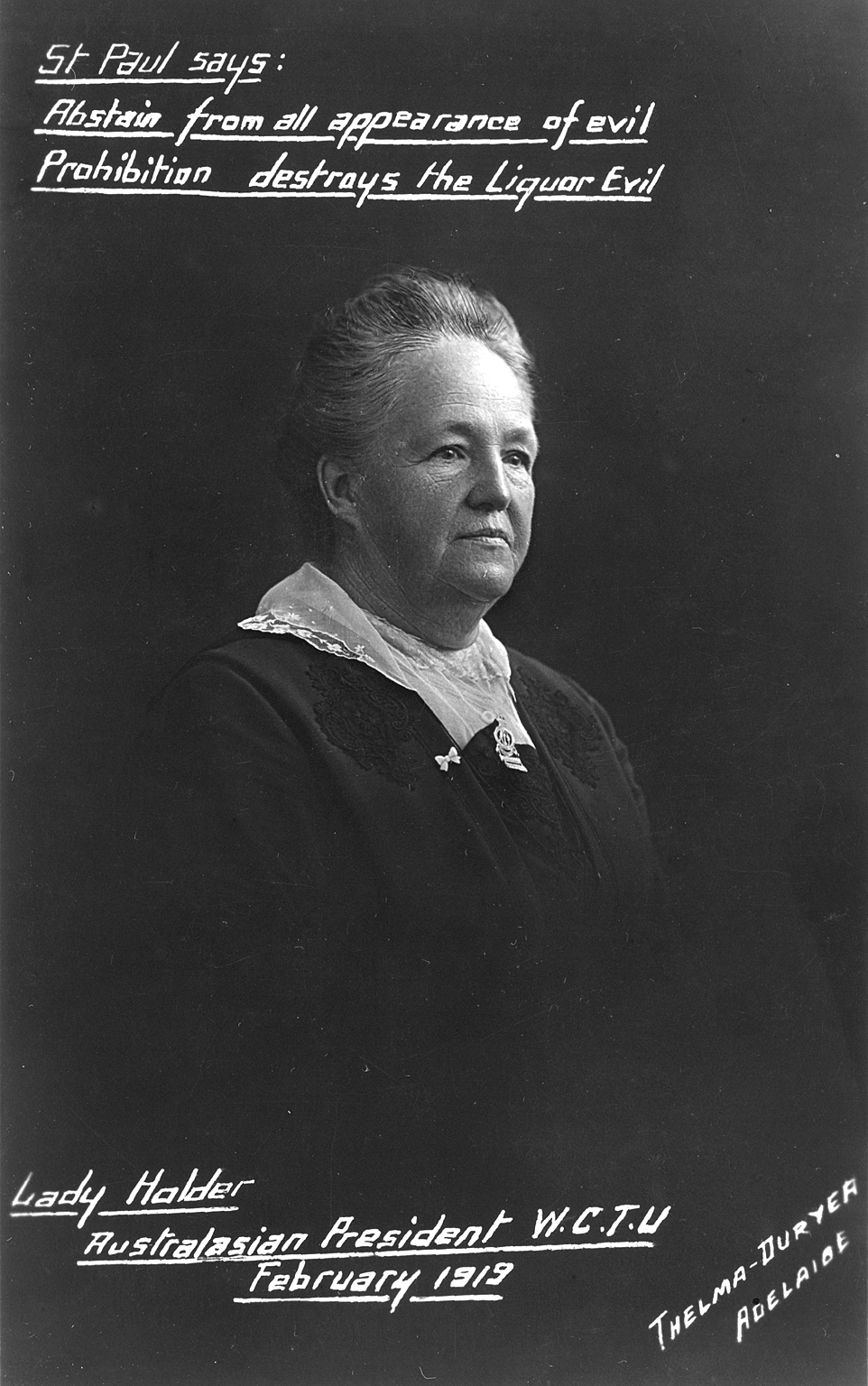
Thela Duryer, February 1919
Woman’s Christian Temperance Union
2001.0085.00033.
The Minutes of the First Intercolonial Woman’s Christian Temperance Union Held in Victoria for the Purpose of Forming a Woman’s Christian Temperance Union of Australasia (1891) is located in 2001.0085, Unit 18. It was at this convention that the Suffrage Department was formed which was instrumental in the coordination of what became known as the “Monster Petition.”[iv]
The WCTU itself can also be regarded as a microcosm of the transnational flow of ideas about women’s rights and social activism. For instance, 2001.0085 Unit 79 contains a copy of the Woman’s Centenary Calendar (1899), edited by American suffragist Carrie Chapman Catt.[v]
Regarding the WCTU’s early activism, 2001.0085 Unit 1 contains the minutes of the Executive Council Meetings. Unit 77 contains the papers of South Australian leader Elizabeth Nichols (President of the South Australian WCTU, Superintendent of the Suffrage Department, Vice President of the World’s WCTU), including correspondence relating to suffrage and women’s political rights (1894-1933). The Union was one of four initial groups to become members of the National Council of Women of Victoria in 1902.[i]
Apart from women’s political rights, the WCTU, from its foundation has been committed to children and women’s welfare. In 1909, the WCTU established a Free Kindergarten in Richmond (refer to 2001.0085 Unit 1 and 7-9 for manifestos, minutes, and wage records). This was closely followed, on 28 June 1909 by the establishment of a School for Mothers, providing education and information on maternal and child health.[ii]
This school was under the leadership of Mrs Spurr, who had previously worked at the equivalent school in London (refer to collection 2001.0085 Unit 85).
For more collections relating to women and early childhood education see this subject guide’s page titled “Female Dominated Professions.”
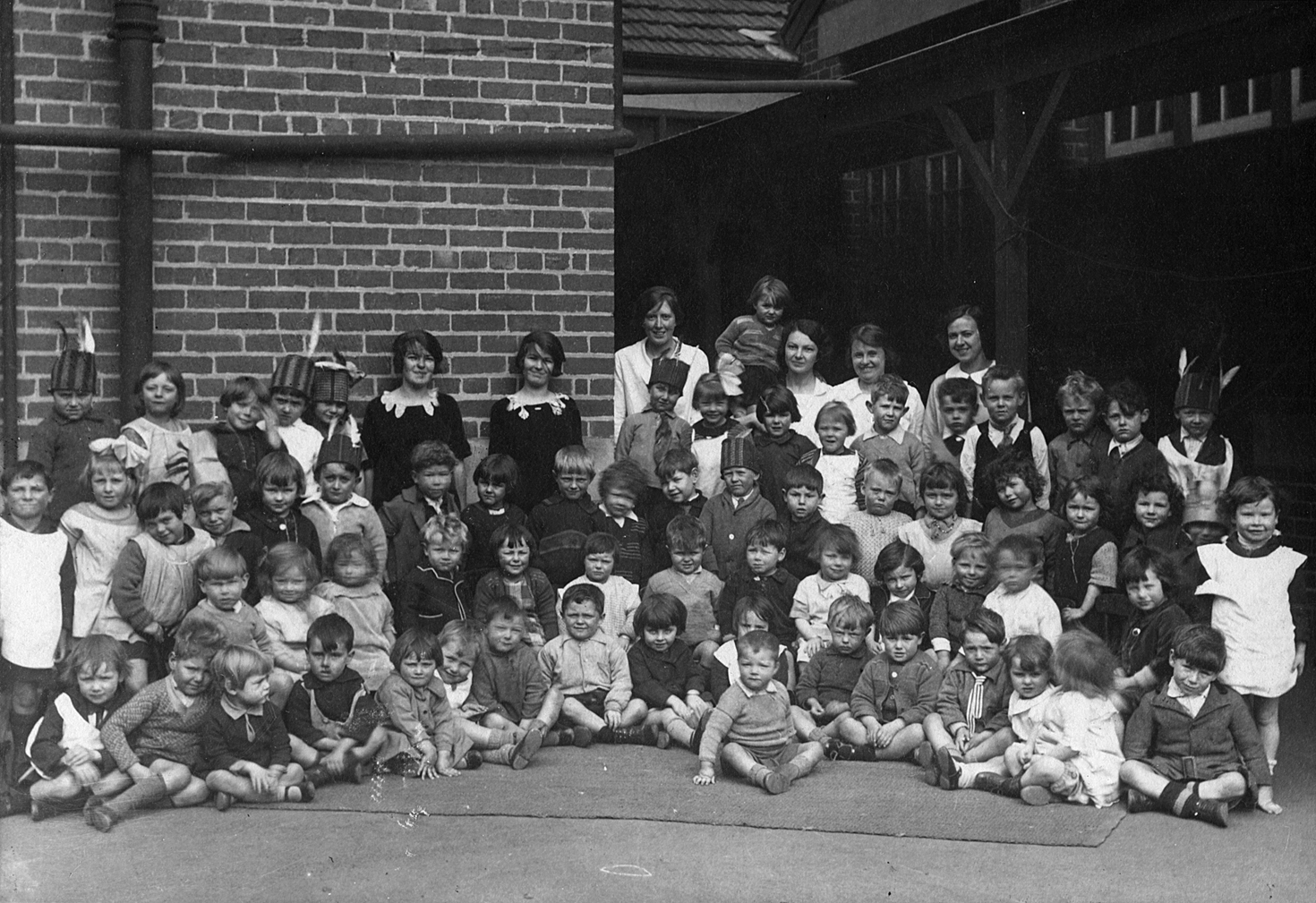
Woman’s Christian Temperance Union
no date
2001.0085.00040.
![William John Howship [photographer] “Portrait of Miss McCoy wearing an embroidered vest of unknown symbolism”, 10 July 1920, Howship, W. J. Collection, 1988.0137.00275.](https://library.unimelb.edu.au/__data/assets/image/0009/2615382/1988-0137-00275.jpg)
10 July 1920
Howship, W. J. Collection
1988.0137.00275.
At the first National Convention in 1891, the Union had also established a group, known as the Loyal Temperance Legion, for children between the ages of seven and fourteen. Files relating to the early Legion are held in 2001.0085 Unit 11; whilst post-World War Two records and programme materials are held in Units 34, and 78. The Union’s Headquarters, Isobel Somerset House, also housed working girls. Records relating to it can be found in 2001.0085 Unit 21.
The University of Melbourne Archives also holds a variety of other collections of late nineteenth-century temperance groups. This includes the Independent Order of Rechabites, who drew their name and philosophy from Rechab, an Old Testament leader whose followers abstained for alcohol, and whose Victorian association was founded in 1847. The restricted collection 1979.0091 contains files from 1861 to 1977 such as minutes, correspondence (1930s-1970s) and quarterly returns (1860s-1977). To access the collection, contact UMA.
The Bendigo Temperance Groups (1876-1950) collection 1984.0113 also contains minute and letter books for the women’s organisation Daughters of Temperance. A significant number of digitised photographs taken by Benalla photographer William John Howship in 1920 are also thought to be of temperance society members, like this photograph of Miss McCoy.[viii]
When searching the finding guides of these collections, it would be advisable to search for key years rather than using thematic search terms.
Young Women’s Christian Association
Help to women by women
Following the Geelong Branch of the Young Women’s Christian Association (1872-1878), a women-only public meeting was held in late 1882. As a result, the Melbourne Branch of the Young Women’s Christian Association (YWCA) opened on 1 April 1883, committed to the 'spiritual, intellectual, and social improvement of young women.'[i] This initially small association of women dedicated themselves to abstain from alcohol and to help fellow women by conducting factory visits and campaigning against sweating (sweatshops).[ii]
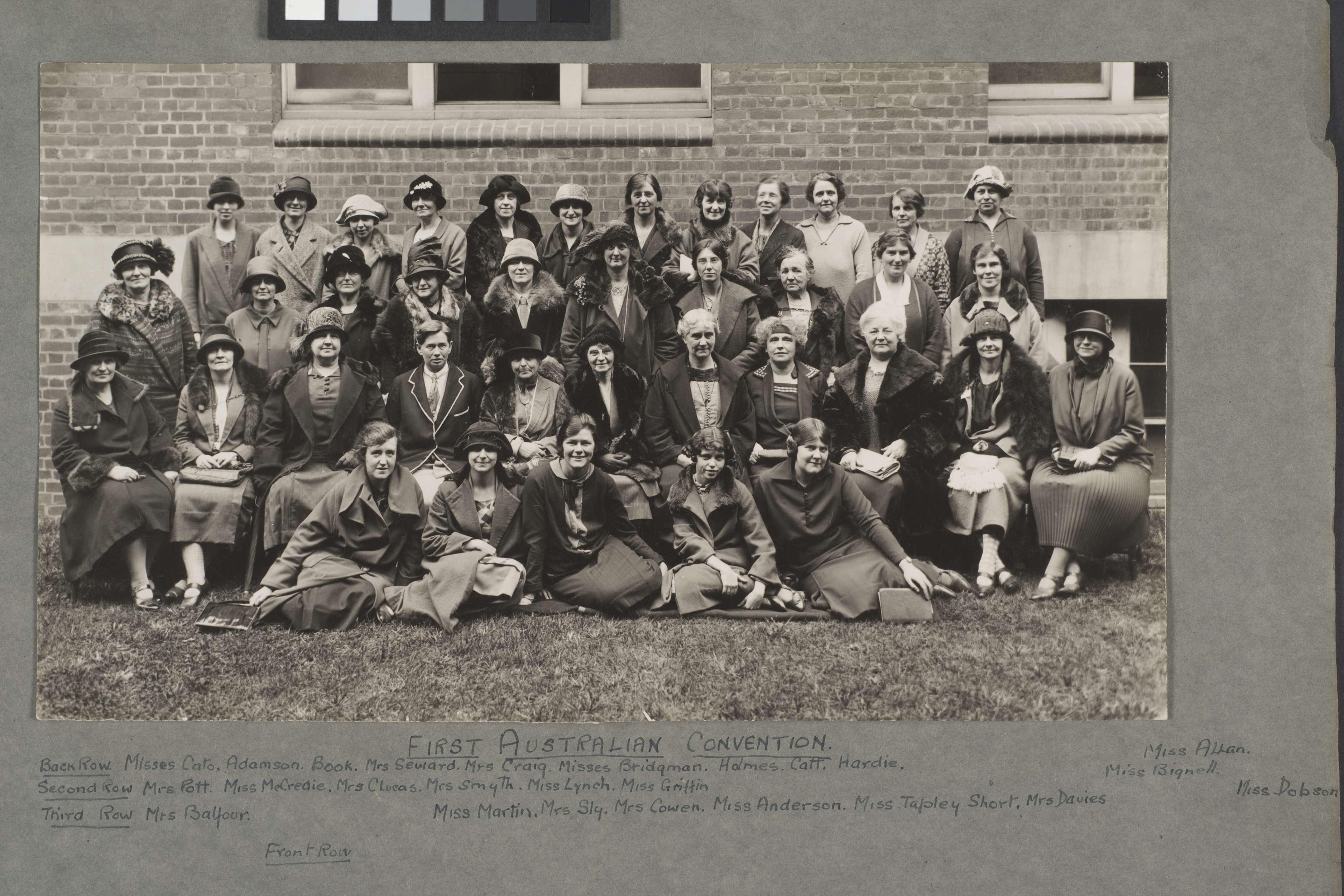
Sydney 1926
Young Women’s Christian Association
1984.0066.00001.
In the spirit of the original London-based YWCA which established hostels for Florence Nightingale’s nurses in 1855, the Victorian branch set up a hostel in 1887 to provide accommodation to women in need. This also included young women relocating to cities for work. Following the establishment of the Australian YWCA in 1907, this service was extended to the reception of immigrant women in 1917 with the founding of the Travellers’ Aid Society.[iii] (For information about the YWCA in post-World War Two migrant camps see this subject guide’s page titled “Migrant Women and the Building of Multicultural Australia.”)
The amalgamated collections 1984.0066 and 1985.0048 contain early records of training for YWCA members from 1909. There are also scrapbooks from 1904 to 1977 and thirteen units of photographs spanning the history of the YWCA in Australia which are valuable resources for academic and family history research. Minutes of state-based associations from South Australia, New South Wales, Queensland, Western Australia, and Tasmania are also included in the collection.
As well as being active for a variety of causes relating to girls and women, the YWCA organised social activities, particularly sporting teams. Photographic collections held in 1984.0066 YWCA Units 439-452 demonstrate the importance the YWCA played not only within the lives of participants, but also in the history of women’s sport in Australia.
The YWCA Victoria first established a women and men’s rowing club in 1910, and in 1925 purchased a sports field to encourage more women to partake in activities. This is indicative of a shifting focus from providing services for “industrial girls” to defining girls’ adolescence, reflective of the period’s loosening of some gendered social mores.[iv]
As historians J.A Mangan and John Nauright reflected, the YWCA’s commitment to organised women’s sport from the 1920s is indicative of a new belief in an “active femininity” which envisaged sport as a way to physically and morally develop unmarried young women.[v] These photographs are also valuable for researchers as many are annotated with the names of those depicted.
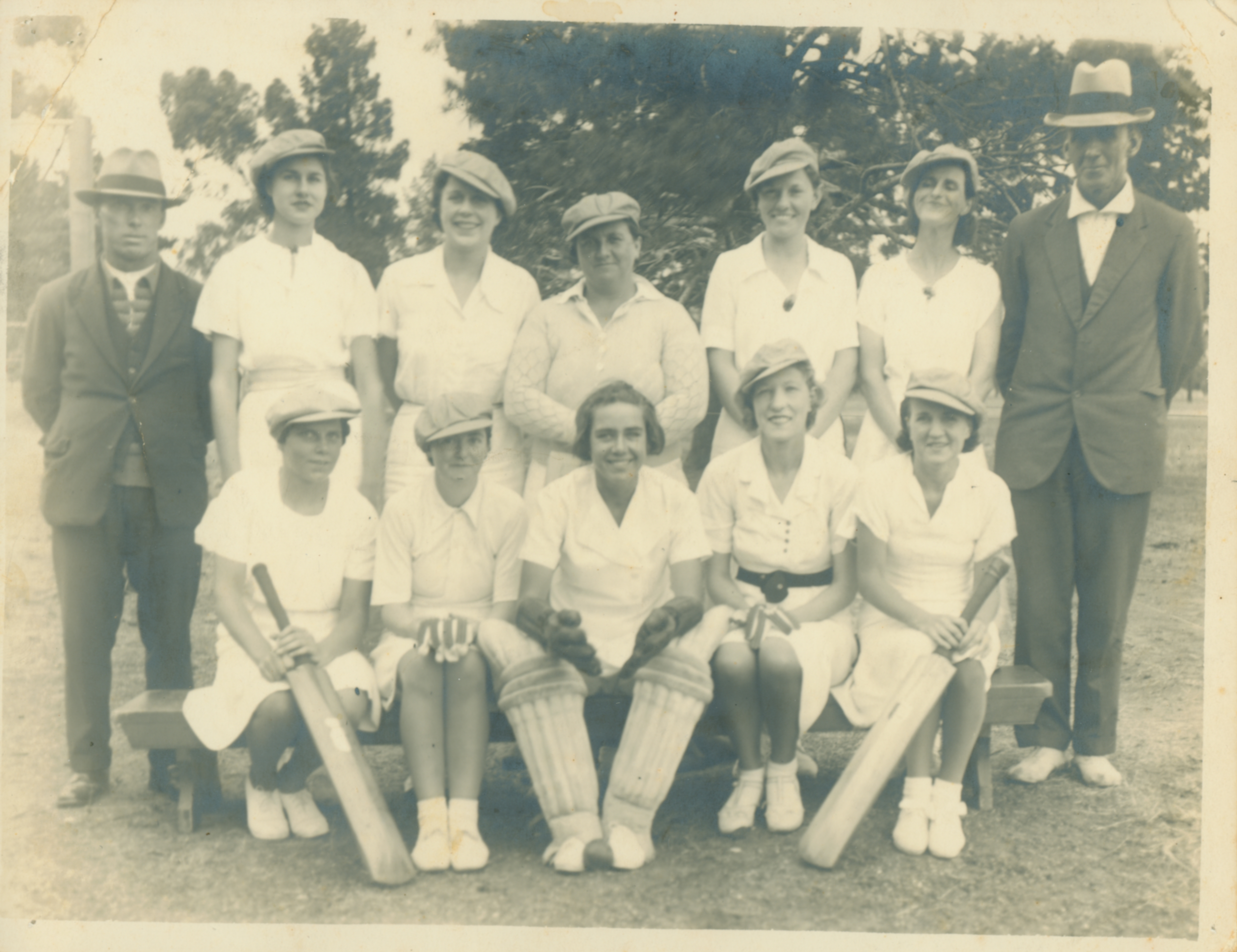
1938”
1948.0066
Unit 45
1984.0066.00031
and verso with names of players and coaches (below).
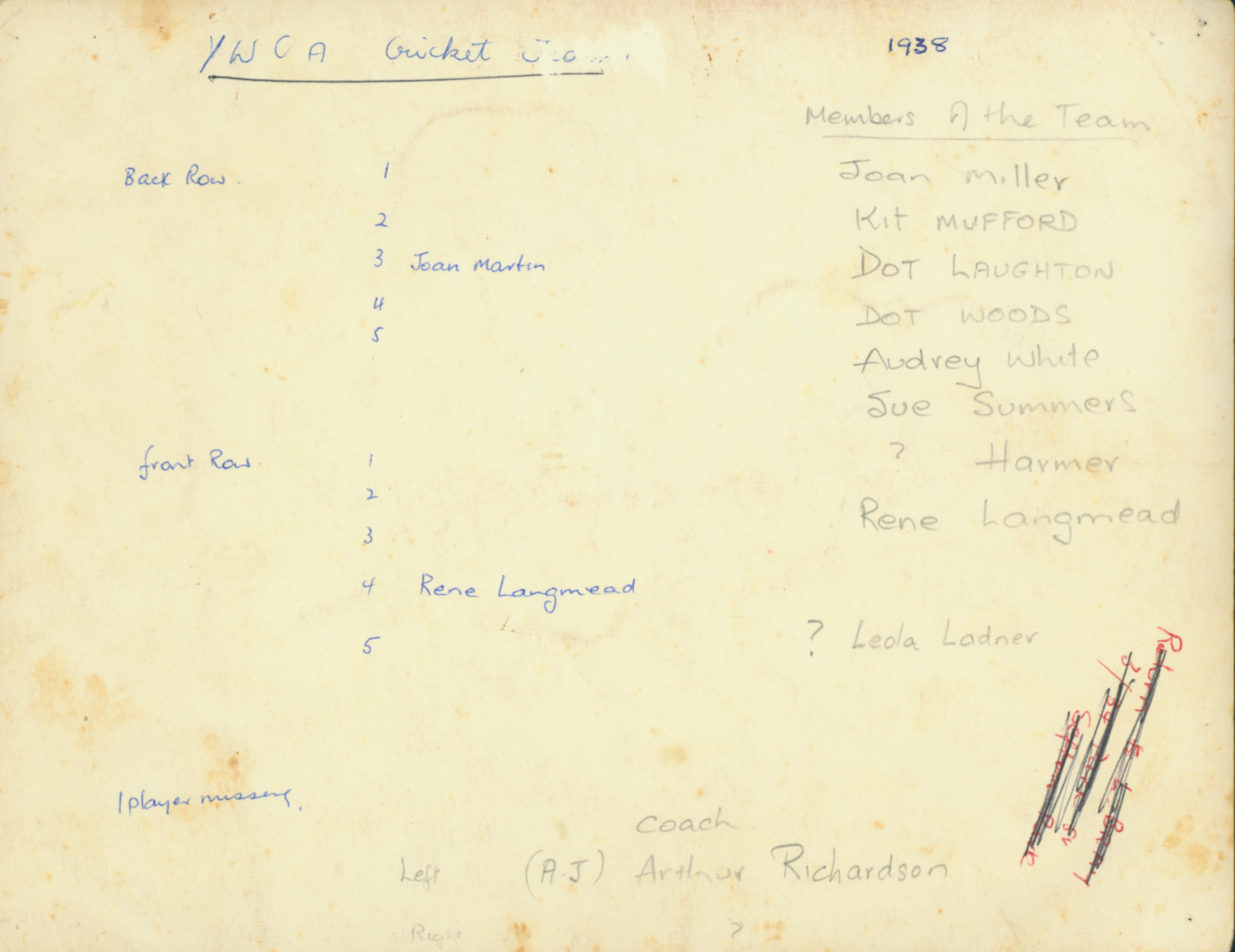
Significantly for the era 1880-1960, the collection also contains World Young Women’s Christian Association files and conference materials. These highlight a globalised religious solidarity which transcended national borders, and for the era of the Immigration Restriction Act connected women from many racial and ethnic backgrounds. For example, see 1984.0066 Units 161-163 for files relating to the YWCA World Fellowship 1920-1980.
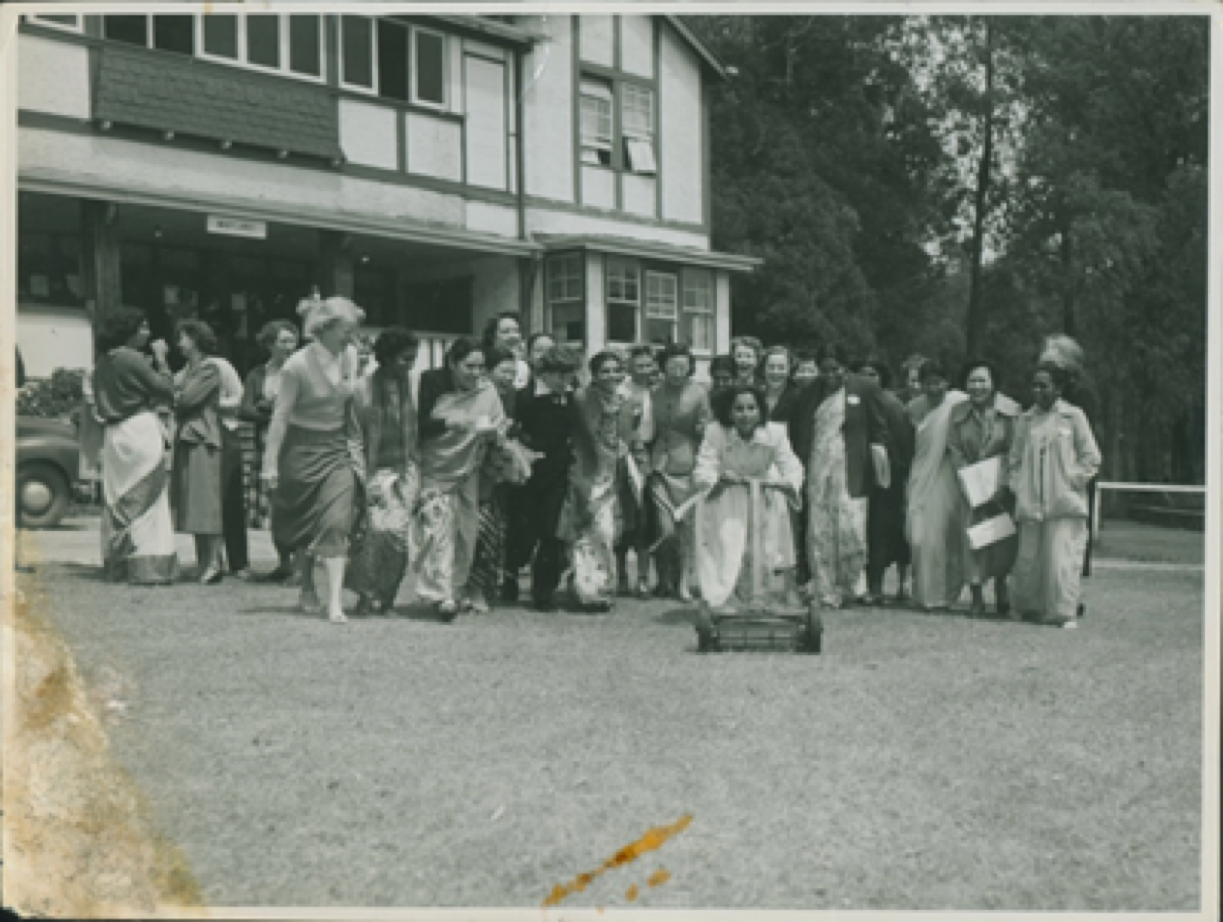
Young Women’s Christian Association
1984.0066
Unit 452
1984.0066.00032.
“It was freezing - so Santosh Andrews of Pakistan showed us how to get warm”
Through the YWCA records we can also recognise the changing opportunities for (predominantly middle- and upper-class) women in Australia during this period, especially the chance to undertake higher education. Connected with this is the collection of Dr Una Beatrice Porter née Cato, 1997.0002, a long-time leader of the YWCA.
Una first started as a volunteer with the YWCA at the age of eighteen in 1918, attending her first overseas conference in California in 1928. Her association continued after she pursued medicine and social work at the University of Melbourne in the 1930s. She became the resident psychiatrist at the Queen Victoria Hospital in 1949, as well as continuing the philanthropic work of her father F.J Cato, co-founder of Moran and Cato, the first chain of grocery stores in Australia. The collection contains Dr Porter’s YWCA speeches from 1939-1974, during which she was vice president of the world association (1955-1959) and World President (1963-1967).
Footnotes
[i] Back row: Mrs. Murray, Mrs. Lee-Cowrie, Mrs. Everett. Second row: Mrs. Hutchinson, Miss MacLean, Mrs. Williams, Mrs. Cumpston, Mrs. E.B. Harris. Front row: Miss George, Mrs E.W. Nicholls, Mrs. Nolan, Mrs. Kirk, Mrs. Payne, Mrs. Britten.
[ii] This followed the establishment of a union in Sydney in 1885. For more information about precursor temperance groups see Anthea Hyslop, “Temperance, Christianity and Feminism: The Woman's Christian Temperance Union of Victoria, 1887-97,” Historical Studies, 17:66 (1976): 29; see also Audrey Oldfield, Woman Suffrage in Australia: A Gift or a Struggle?, (Melbourne; Cambridge: Cambridge University Press, 1992),139.
[iii] Quoted in Audrey Oldfield, Woman Suffrage: A Gift or A Struggle?, 139.
[iv] See Parliament of Victoria, “Women’s Suffrage Petition”.
[v] For more information see Anne Varty, Eve's Century: A Sourcebook of Writings on Women and Journalism 1895-1950 (London: Routledge, 2000), 83; Jacqueline Van Voris, Carrie Chapman Catt : a public life, (New York : Feminist Press at the City University of New York, 1987).
[vi] For more information on the National Council of Women in Victoria refer to the Australian Women’s Registry, Jane Carey, “National Council of Women of Victoria (1902-), 9 June 2011.
[vii] Anna Blainey, “Woman's Christian Temperance Union”, eMelbourne, the School of Historical & Philosophical Studies, The University of Melbourne, July 2008; see also Ellen Warne, Agitate, educate, organise, legislate: Protestant women's social action in post-suffrage Australia. (Carlton: Melbourne University Publishing, 2017).
[viii] William John Howship [photographer] “Portrait of Miss McCoy wearing an embroidered vest of unknown symbolism”, 10 July 1920, Howship, W. J. Collection, 1988.0137.00275.
[ix] “A Short History of YWCA Victoria”.
[x] Francesca Bussey, “Melbourne Young Women’s Christian Association (Melbourne Y.W.C.A) (1882-1999)”, Australian Women’s Register, 27 April 2009.
[xi] YWCA Australia, “Our Story”, <http://www.ywca.org.au/about-us/our-story >; Judith Smart,” Feminists, Flappers and Miss Australia: Contesting the meanings of citizenship, femininity and nation in the 1920s”, Journal of Australian Studies 25:71 (2001): 7.
[xii] Smart, “Feminists, Flappers, and Miss Australia,” 7.
[xiii]J.A Mangan and John Nauright, Sport in Australasian Society: Past and Present (Abingdon: Frank Cass, 2000), 194.
[xiv] Doug Scobie, “Australian Women’s National League”, eMelbourne, School of Historical and Philosophical Studies, University of Melbourne, July 2008.
[xv] Clare Land and Jane Carey, “Australian Women's National League (1904 - 1944?)”, Australian Women’s Registry, last edited 22 December 2009.
[xvi]Marion Quartly, “The Australian Women’s National League and Democracy, 1904–1921”, Women’s History Review, 15 (2006): 36.
[xvii] Land and Carey, “Australian Women’s National League”; Quartly, “The Australian Women’s National League”, 45.
Australian Women’s National League
‘To Safeguard the Interests of the Home, Women and Children’
Established following the enfranchisement of Australian (non-Aboriginal) women in 1901, the conservative Australian Women’s National League (AWNL) was committed to promoting the empire and opposing socialism.[i]
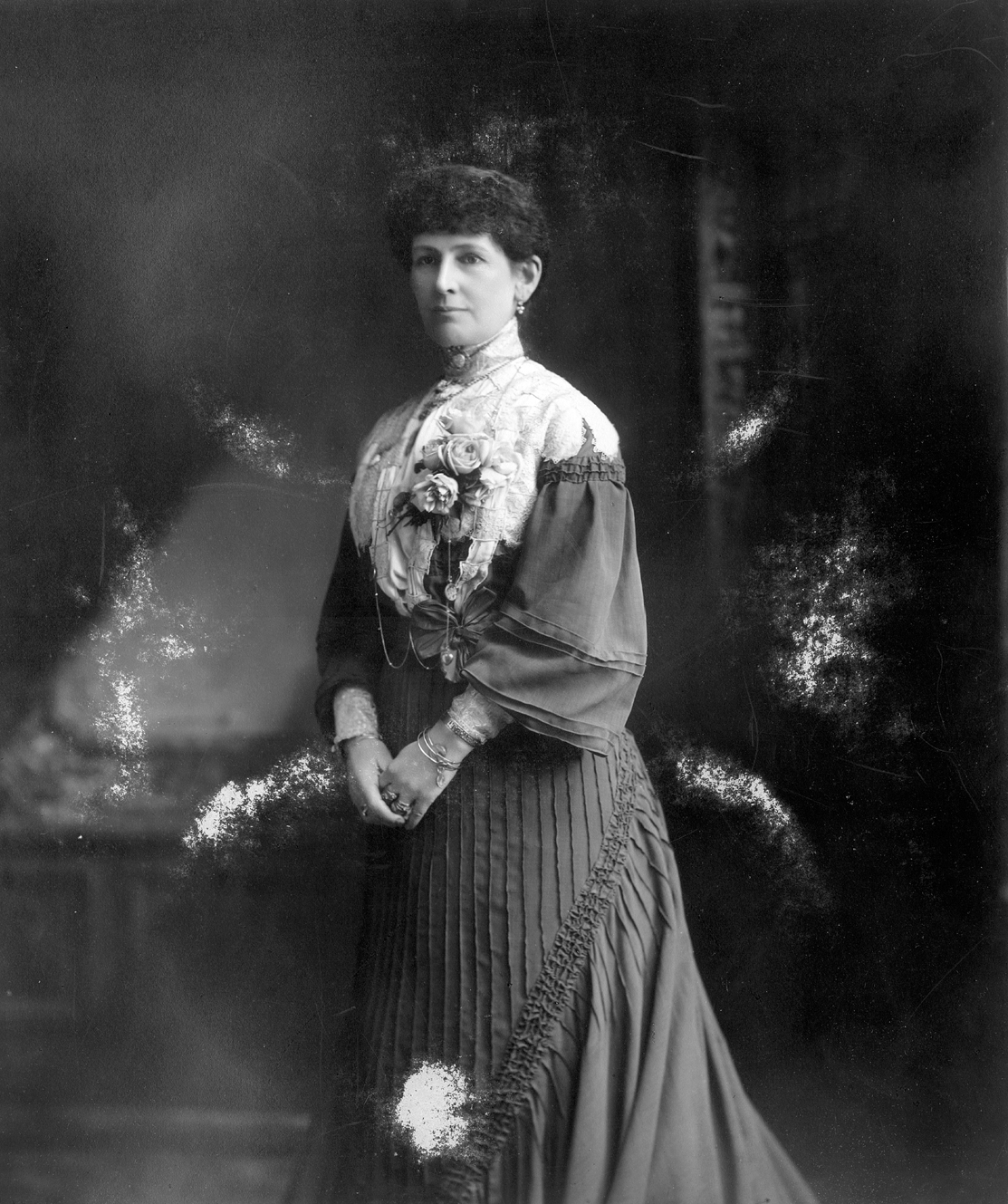
the inaugural president
c. 1904
Australian National Women’s League
1987.0141.00049
Lady Janet Clarke, wife of Victoria’s largest landowner and a prominent philanthropist, first held a meeting of approximately three hundred women in her Toorak home, Cliveden, in August 1903 to discuss the forming of an organisation. This followed the success of conservative women campaigning in the Corio and Balaclava electorates in the first federal election including women voters in 1903. However, it was not until a meeting in 1904 at Melbourne Town Hall that the Australian Women’s National League was formed with Clarke as president[ii]
In contrast to the Women’s Christian Temperance Union’s official position of political neutrality, the AWNL had close ties to the conservative United Australia Party. Historian Marion Quartly has highlighted how the AWNL had roots in earlier anti-suffrage movements, rendering it ‘born in opposition to this triumph of democracy and also complicit within it.’[iii]
Ideologically the League was committed to a platform of loyalty to the crown, protecting Australia from socialism, women’s education and the interests of women, home and family. Cohering with this understanding of women’s citizenship, the League advocated for greater provision of domestic science courses in schools and coordinated Empire Day Celebrations in Melbourne (1905-1945). Whilst maintaining a conservative philosophical core and envisioning men and women as occupying different societal “spheres”, the League did, from 1906, support Victorian state women’s suffrage and its publication, Woman, was an early promoter of equal pay for professional women.
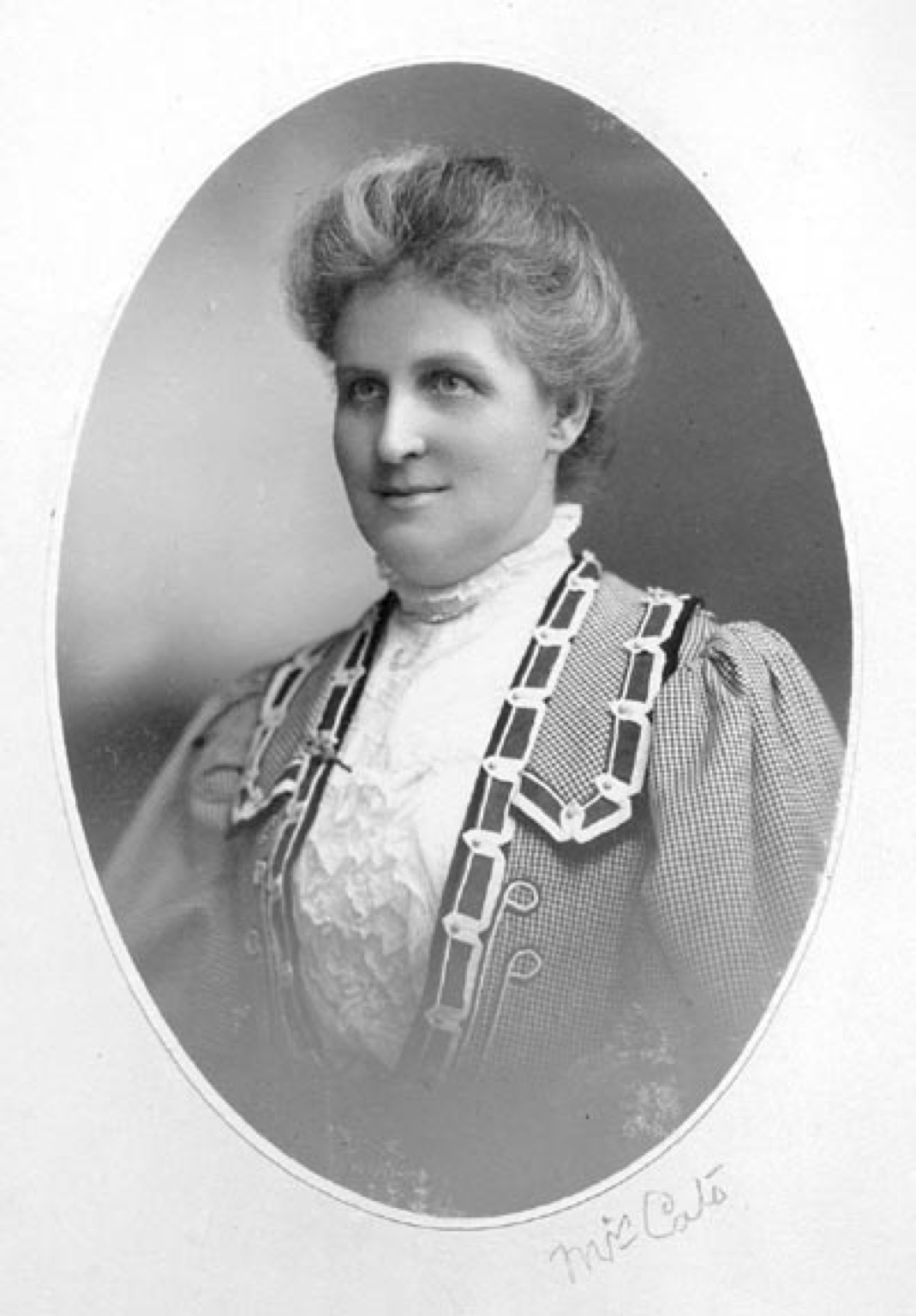
Sarony Studios
Australian National Women’s League
1987.0141.00046
The collection 1987.0141 contains 159 photographs of the League’s foundation members and this early history. These photographs are valuable for the history of conservative politics in Victoria and evidence upper-class women’s political engagement.
“Mrs Cato”, Sarony Studios, Australian National Women’s League, 1987.0141.00046
After 1918, the League shifted its focus towards maternal health, significantly being involved in “Baby Week” which included a series of health lectures and campaigns under the banners “Mothers are Nation Builders” and “No Babies, No Industries, No Nation”, and was also key in the establishment of Baby Health Centres and guarantee of pure milk in Victoria.[iv]
The Australian National Women’s League was later significant in its support of the Australian Liberal Party’s foundation, and the organisations eventually amalgamated. For files relating to the foundation years of the Liberal Party Victorian Division see the collection 1985.0148.
Yet, a minority of its leadership resisted the eventual merge with the Liberal Party, continuing to emphasise the importance of women’s separate political representation. For more detail on the Australian Women’s National League refer to 1987.0141 which contains a history celebrating its fiftieth anniversary.